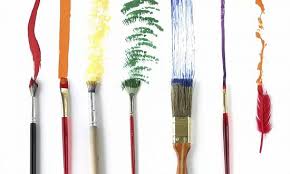MASTERPIECES OF PASTEL FROM FUNDS OF THE TREYAKOV GALLERY (part 2)
 In Russia, pastel technique appeared in the second half of the XVIII century, but never reached such popularity as in Europe. The first pastors known to us were invited foreign masters – G.-F. Schmidt, V. Eriksen, Gagelgans, I.-G. Schmidt, I. Bardou and their younger contemporary K. Bardou. Many of them were portrait painters. Their works are executed at a good professional level, in the tradition of cabinet portraiture. They are characterized by a picturesque solution, they carefully wrote out individual features, finely modeled faces, powdered wigs, carefully detailed clothing, thin foam of lace, the mysterious sparkle of orders, the gentle shimmer of tones typical of pastels. In these small, often paired, family portraits that once adorned the walls of Russian noble nests, live human faces, famous and unknown, appear in front of the viewer – people who have gone down in history but have not sunk into oblivion, thanks to artists who have preserved their appearance for posterity.
In Russia, pastel technique appeared in the second half of the XVIII century, but never reached such popularity as in Europe. The first pastors known to us were invited foreign masters – G.-F. Schmidt, V. Eriksen, Gagelgans, I.-G. Schmidt, I. Bardou and their younger contemporary K. Bardou. Many of them were portrait painters. Their works are executed at a good professional level, in the tradition of cabinet portraiture. They are characterized by a picturesque solution, they carefully wrote out individual features, finely modeled faces, powdered wigs, carefully detailed clothing, thin foam of lace, the mysterious sparkle of orders, the gentle shimmer of tones typical of pastels. In these small, often paired, family portraits that once adorned the walls of Russian noble nests, live human faces, famous and unknown, appear in front of the viewer – people who have gone down in history but have not sunk into oblivion, thanks to artists who have preserved their appearance for posterity.
Many pastel portraits of Russian masters of the XVIII century remained anonymous. Their authors are unknown, as well as the faces depicted by them. Of the subscribed works of this time, we will call only the excellent “Portrait of the Unknown”, performed by Stepan Yasnopolsky, whose entire figurative system, the silver-pearl pastel gamut, echoes the works of F. S. Rokotov.
Among pastels of the mid-18th century, rarities such as “Portrait of Empress Elizabeth Petrovna”, a preparatory drawing, slightly touched by colored pastels, the famous engraver G.-F. Schmidt, “Allegories” in the Rococo style of the Austrian Hagelgans and “Centennial Tsarskoye Selo inhabitant with family” attract attention. »Dane V. Eriksen, showing us a very early example of the peasant genre in art.
In the era of romanticism – in the first quarter of the XIX century – the pastel reappears in the portrait, becoming the favorite technique of many artists, in whose work a peculiar cult of color develops. In the early pencil portraits of O.A. Kiprensky, pastel sounds like a leading musical part. The intensity of its color gives pencil portraits a special emotional sound, revealing the subtle mental states of his models. Kiprensky’s pastel appears as a drawing technique, organically included in the fabric of the picture.
The most romantic artist of the era – A.O. Orlovsky – actively worked as a pastel, including it as an important component in his energetic and temperamental works. His drawings, combining the quick strokes of an Italian pencil with flashes of juicy, sonorous pastel color, are full of wild passion and emotional impulses.
A.G. Venetsianov worked in pure pastel technique. It is not known who introduced the artist to pastel colors, but it was in this technique that he performed portraits throughout the first half of his career. Pastel Venetsianov also painted several genre paintings. For many years, the artist preferred pastel to all other types of painting, and it occupied a dominant place in his portrait practice. His portraits are built on the soft flow of strokes, on the harmony of color relationships, performed widely, freely, sweepingly. Melting contours, subtle transitions from one color to another, generalized forms – all this gives the models a quiet dreaminess and tranquility. Professionally mastering all the expressive means of the pastel, Venetsianov transformed everyday life into high poetry, finding beauty in “inexhaustible” nature. Portraying his neighbors on the estate, the artist recreated the images of the Russian provincial nobility, recognizable by “Eugene Onegin” and “Belkin’s Tales” by A. Pushkin.
Following Venetsianov, some artists turn to genre motifs in pastels (I. Bugaevsky-Grateful “Kapitoshka”, M. I. Terebenev “The Nursing Woman”, F. G. Toropov “Portrait of a Son”).
In the 1840-1850s, salon portrait was widely used. Along with Russian artists, foreign artists also work in this genre.
Time introduced changes in the very manner of pastel writing. Sacrificing her lightness and airiness, she becomes denser, heavier, as if competing with oil painting (Unknown artist “Portrait of an Unknown Woman in a Green Dress”, F.-E.-A. O’Connell “Portrait of a Child in a White Cap”).
In the fifties and sixties of the XIX century, pastel almost disappears from art. As artists plunged deeper into the problems of public life, and critical realism gained a dominant place in Russian art, multicolor pastels are less and less common in the field of painting.
The fragile, aristocratic art of pastels of previous eras was replaced by a more democratic monochrome drawing with sauce. Refusing the color variety, I.N.Kramskoy finds his own special technique, similar in texture and related to pastels. In the “photo-painting” of his portraits, filled with dry and wet sauce, the lines disappear in the soft fog of modeling.
Classical pastel technique is rarely addressed, in cases where you need to create the equivalent of painting.




